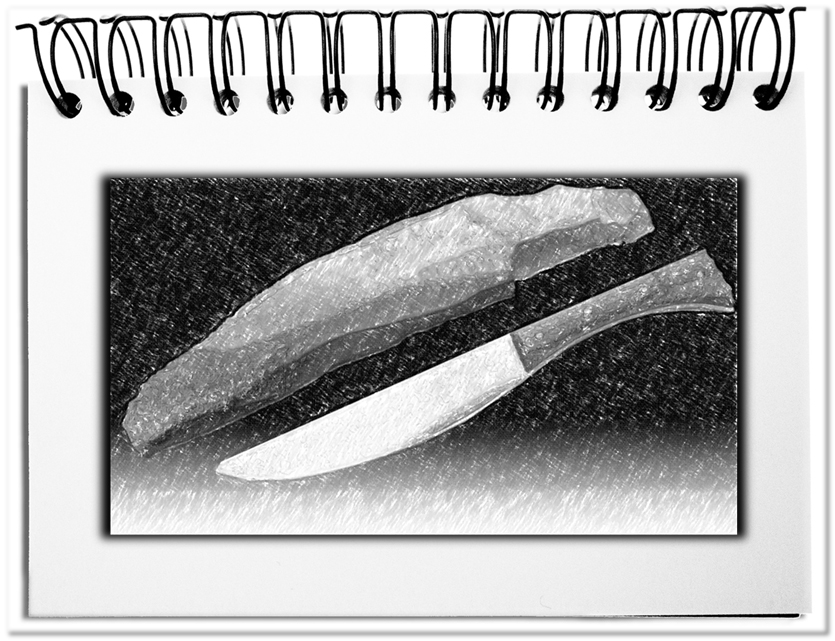The first hand axes that were created by our ancestors two and a half million years ago were the Swiss Army Knife of the Stone Age. The extremely sharp edges for cutting or scraping and the blunt side for hammering extended the human abilities in daily life. Even without appropriate evidence, one can assume that the knife was in those days on the one side a useful tool and on the other side a deadly weapon. Millions of people were killed in the course of history with knifes. Thus, the classification of a knife is torn back and forth between tool and weapon.
Nearly all inventions have a negative flipside. On the one hand there is a practical benefit. But on the other hand they are used for unwanted activities with terrible consequences.
The tool is an aid that extends the human physical and mental abilities. Usually we have a larger toolset in our household – from kitchenware, to a toolbox with hammer and screwdriver, to our computers and television sets. We use these instruments, without being aware, how it would be, if they were not at hand – for cutting bread, for repairing or for learning.
Weapons are objects, with which organisms and things are to be damaged, up to death and/or the total destruction. The use is actually limited to certain specialists – hunters, policemen, soldiers. Thus, only a few people have access to weapons, wouldn’t be there tools that can be also used to do these destructive tasks.
Due to the unacceptable side effects that create some tools, inventors always have to ask themselves, whether they become guilty by developing these tools. Which questions could help them?
- Do the advantages outweigh the disadvantages?
- Are there more benefits than damages?
- Do the opportunities that emerge count more than the dangers that develop?
For most of the tools the positive characteristics will outweigh the negative ones. The knife has by far more advantages in the household as disadvantages as a killing instrument. The benefit of cutting is bigger than the damage of killing. The possibilities of cutting materials or surgical procedures are surely more important than the damage that results from criminal or governmental killing.
Bottom line: A tool is always a latent weapon. Not for nothing there is a reason to speak of instruments of war or killing. Are there tools that do not contain these negative effects of a weapon? Probably not. With a common artefact like a knife with all its features this dilemma becomes visible.

